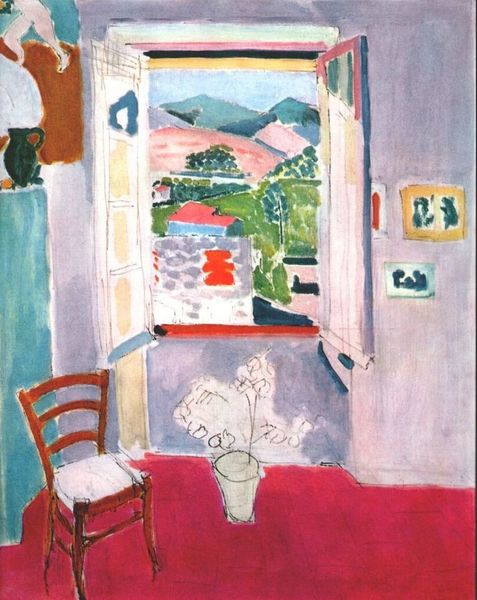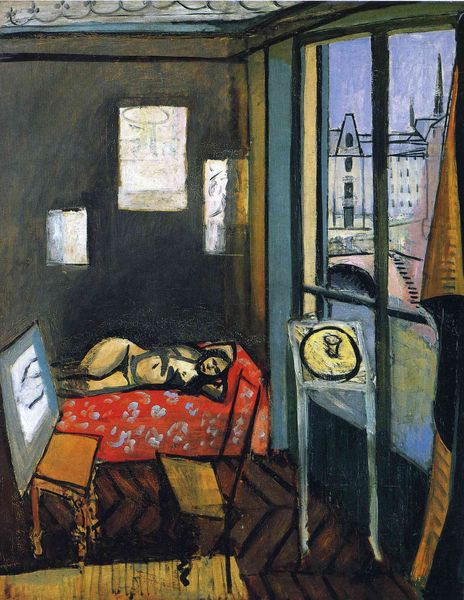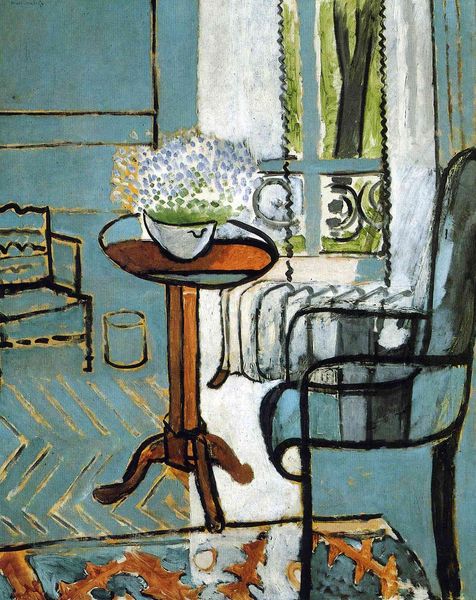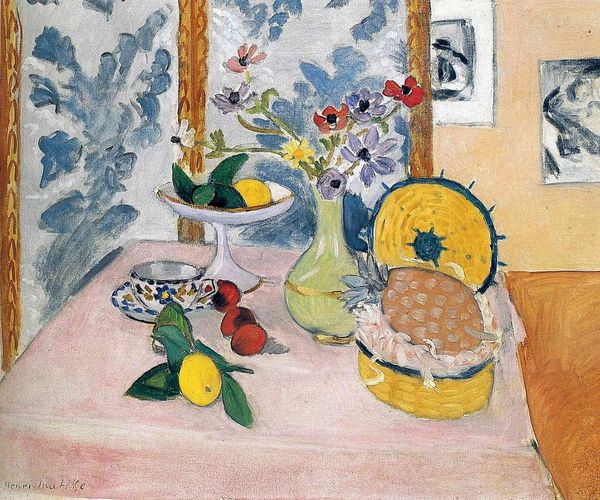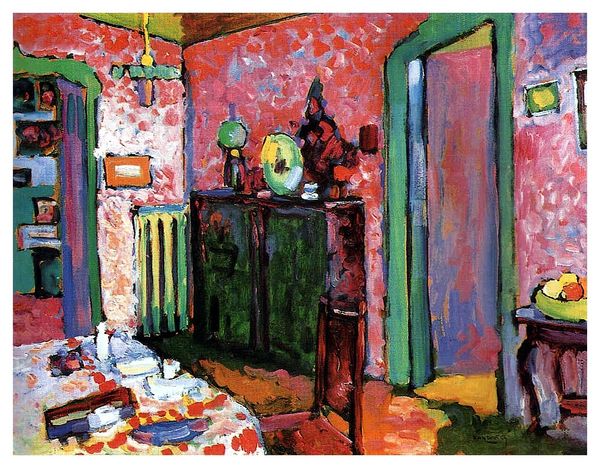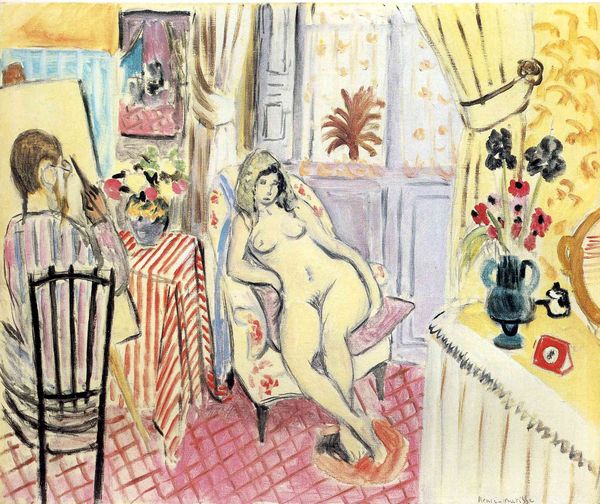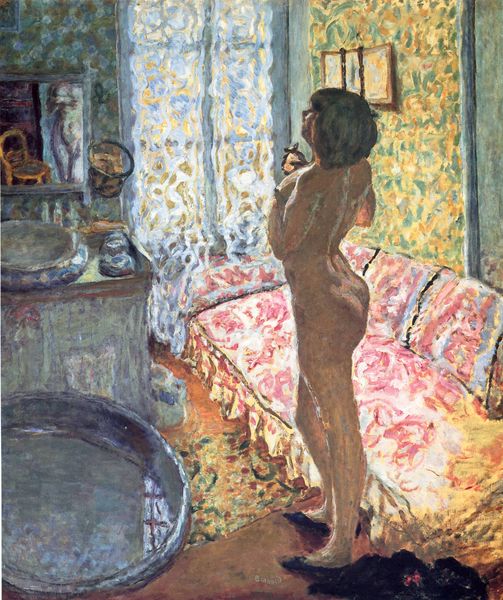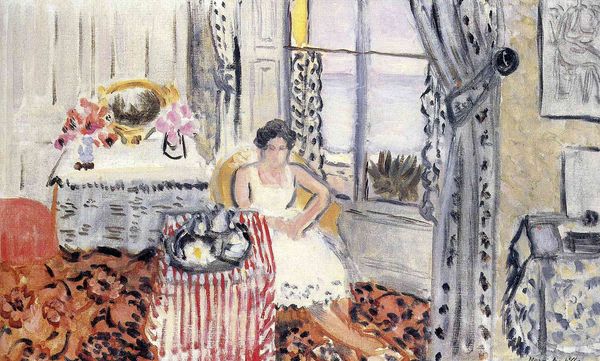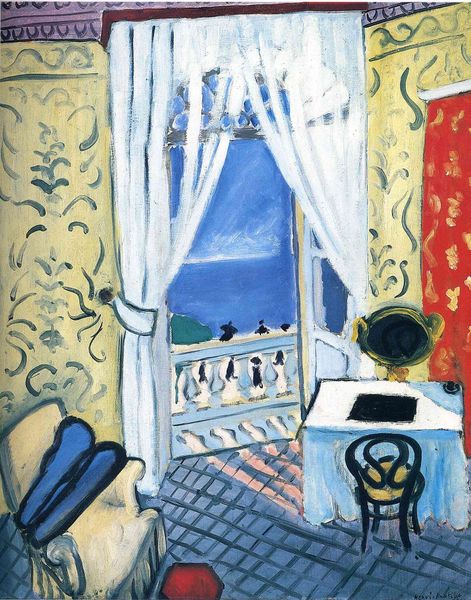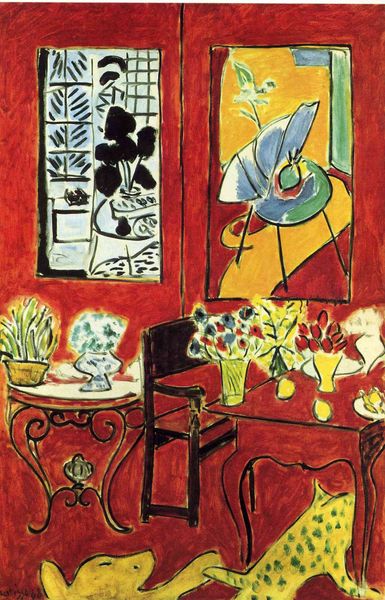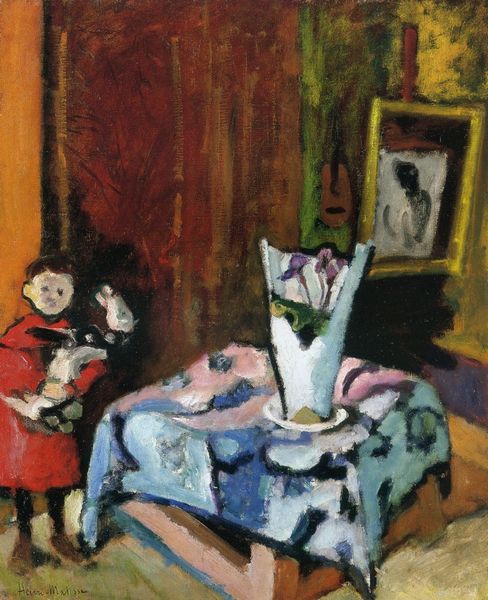
Copyright: Public domain US
Curator: Henri Matisse's "Femmes Au Canapé Ou Le Divan" from 1921. Oil paint, applied with visible impasto. I find the use of impasto, especially in the rendering of the floral wallpaper, interesting considering the context of its production—how would that choice speak to a viewer today? Editor: It’s visually busy, isn’t it? And kind of oppressive? All those competing patterns, the woman sort of tucked into the corner… It creates an immediate sense of enclosure, almost a stifling domesticity. Curator: Interesting take. It invites considering what it meant to be a woman in the domestic sphere in early 20th century. Notice how the texture created through the painting process itself contributes to this "busy" feeling. Each stroke is visible, reminding us of the labor involved, and by extension perhaps the unseen labor within this domestic space. Editor: Precisely! It is like the room itself becomes a representation of internal emotional landscapes experienced due to expectations about social role, gender, or class at the time. Consider how Fauvism allowed for this release. How it provided avenues of commentary with techniques—as in color relations— to deliver emotional or subversive commentary, not unlike the punk movement fifty years later. Curator: A punk moment, interesting—considering then the availability of artistic materials at this time in Matisse’s career and access. How would Matisse make those statements given his means of production and how were the modes of display relevant at the time of its debut to audiences who experienced it at that moment in history. Editor: The open window behind her hints at possibilities beyond that space. Is she looking wistfully outwards or is that to act as contrast to the internal feelings? The textures, colors and forms act as a release for expressing what was likely the limited ability for such at the time. Curator: I appreciate that reading. For me, it's always fascinating how Matisse reconciles high art ideals with what we might consider more mundane aspects of everyday existence: domestic spaces and the like. The painting, for all of its bright colours, offers quiet introspection of what labour is visible or unseen within constraints. Editor: Indeed, by interrogating his life at this time of creation, we can discover so much about not only the painting but its greater statement through that visibility on social constrictions during this time. Curator: Precisely; considering material and artistic labour creates access and an approach point to address cultural and theoretical aspects to enrich greater context to social constructs at that time. Editor: Absolutely, art constantly reflects and refracts our lived experiences through various intersectional lenses and in Matisse’s rendering of "Femmes Au Canapé Ou Le Divan," all of that feels so richly intertwined.
Comments
No comments
Be the first to comment and join the conversation on the ultimate creative platform.
